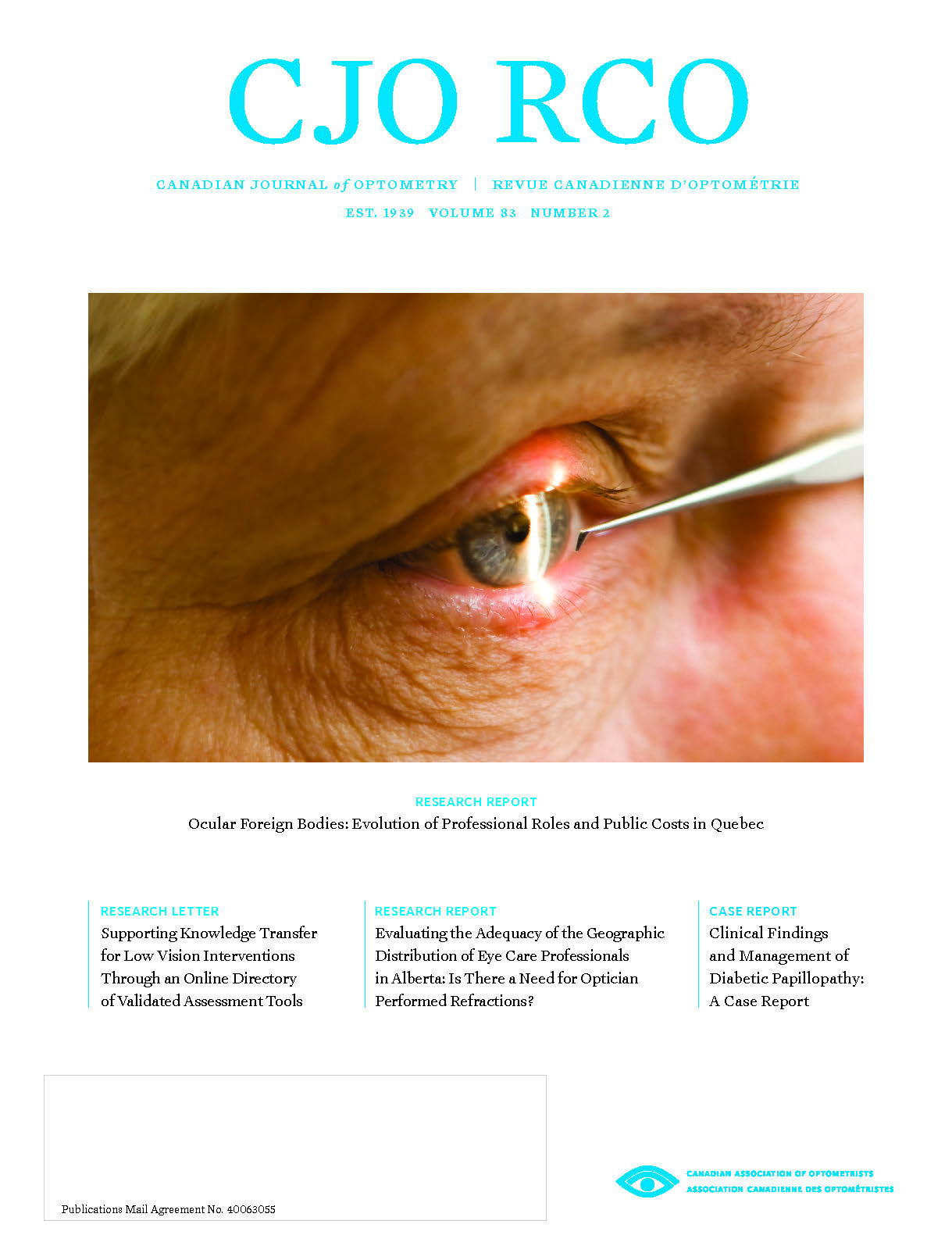Ocular foreign bodies: evolution of professional roles and public costs in Quebec
DOI:
https://doi.org/10.15353/cjo.v83i2.1553Keywords:
eye foreign bodies; optometry; ophthalmology; emergency treatment; health services accessibility; health expendituresAbstract
Purpose
In 2003, Quebec optometrists were legally enabled to extract superficial ocular foreign bodies, with part of this service covered by the universal health insurance. This study analyses the evolution of roles for professionals managing this condition (optometrists, ophthalmologists, emergency physicians and family physicians) and the related public healthcare costs.
Methods
Data from the provincial health insurance were combined to demographic and annual healthcare workforce statistics. Across professions and sociosanitary regions, variations in annual rates of conditions treated were calculated, as well as variations in public healthcare costs. Linear regression slopes of these variations were used as indicators of linear trends.
Results
Between 2010 and 2016, the proportion of cases managed by optometrists increases from 32% to 44%, following a significant trend (p < 0.007). For family physicians, the proportion of cases managed decreases from 49% to 33%, following a significant trend (p < 0.0001). The increase in optometrists managing cases is visible in almost all sociosanitary regions, reaching +19%. A significant trend was observed for increasing healthcare costs for optometrists (p < 0.008) and ophthalmologists (p < 0.004) and for decreasing healthcare costs for family physicians (p < 0.001). In 2016, optometrists managed 44% of cases, representing 13% of related healthcare costs.
Conclusion
In Quebec, optometrists are now the professionals managing the largest proportion of superficial ocular foreign bodies, across the province. There is an apparent shift from the proportion of cases managed by family physicians, which have similarly decreased.
Published
How to Cite
Issue
Section
License
Copyright (c) 2021 Benoit Tousignant, Drissa Moriba Coulibaly, BOptom, MSc, Julie Brûlé, OD, MSc, FAAO, Jacques Gresset, OD, PhD, FAAO

This work is licensed under a Creative Commons Attribution-NonCommercial-NoDerivatives 4.0 International License.


